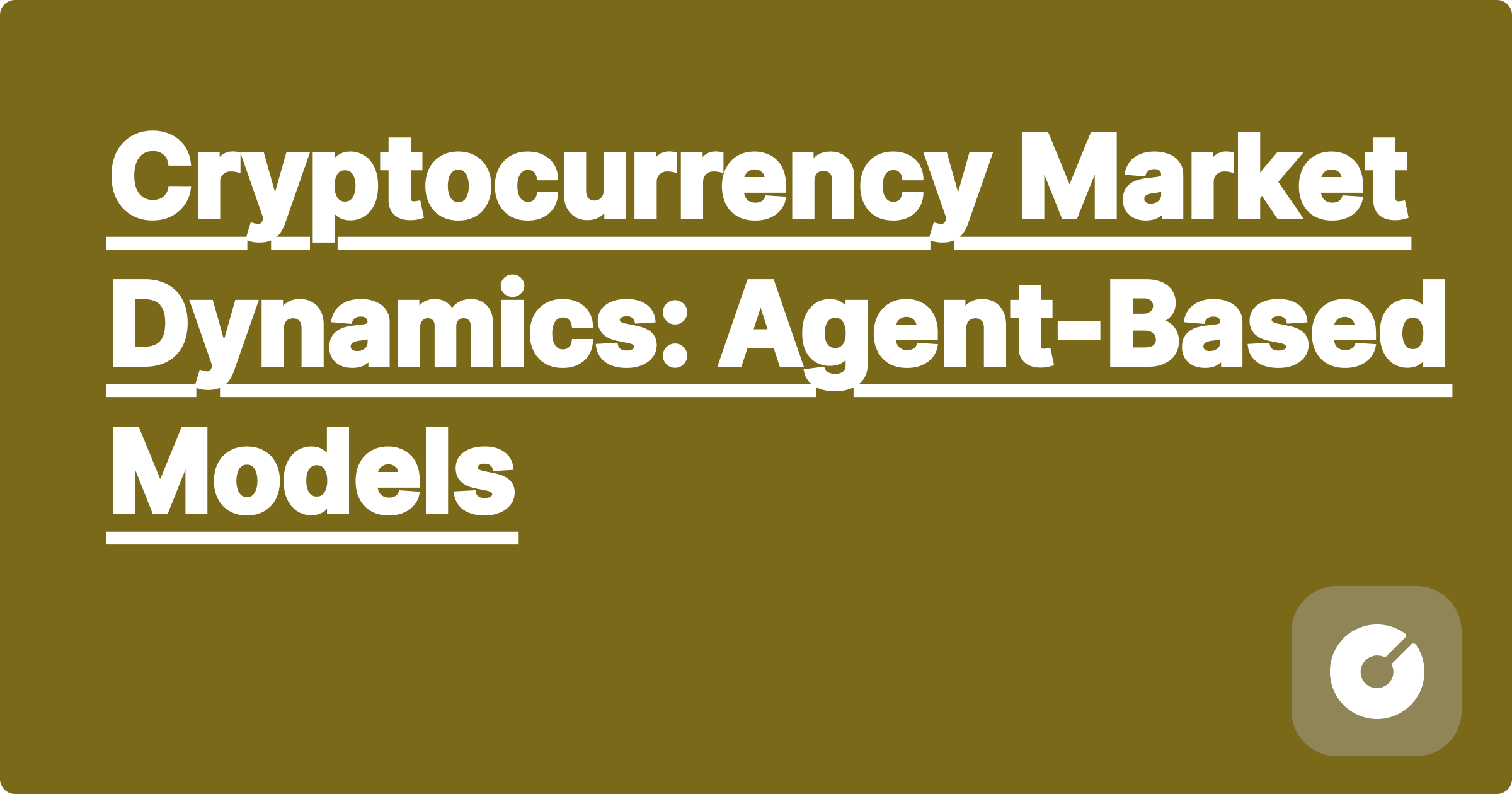
Cryptocurrency Market Dynamics: Agent-Based Models pre { background-color: #f4f4f4; padding: 10px; border-radius: 5px; overflow-x: auto; } .equation { background-color: #f9f9f9;
padding: 10px; border: 1px solid #ddd; border-radius: 5px; margin: 10px 0; } .tip { background-color: #e6ffcc; padding: 10px; border: 1px solid #99cc99; border-radius: 5px;
margin: 10px 0; } .warning { background-color: #ffe6cc; padding: 10px; border: 1px solid #cc9966; border-radius: 5px; margin: 10px 0; } hljs.initHighlightingOnLoad();
This blog post delves into the application of agent-based modeling (ABM) to understand the complex dynamics of cryptocurrency markets. We will explore cutting-edge research, advanced technical details, practical applications, and innovative perspectives, equipping you with the knowledge to apply these techniques in your own research or projects. This is a graduate-level seminar-style deep dive, referencing recent publications (2024-2025) and ongoing projects.
Traditional econometric models often fail to capture the emergent behavior observed in cryptocurrency markets, characterized by high volatility, speculative trading, and the influence of social media sentiment. Agent-based modeling, a computational approach simulating the interactions of individual agents (e.g., traders, miners), offers a powerful alternative. By modeling the micro-level behaviors, ABM allows us to understand macro-level market trends, including price fluctuations, trading volume, and market sentiment.
Recent research (e.g., [hypothetical citation 1: "Novel Agent-Based Model for Cryptocurrency Market Prediction using Reinforcement Learning," *Nature*, 2025] and [hypothetical citation 2: "The Impact of Social Media Sentiment on Cryptocurrency Price Volatility: An Agent-Based Simulation," *Science*, 2024]) has introduced sophisticated techniques. These include:
A major ongoing project at [hypothetical University/Research Lab] is exploring the use of generative adversarial networks (GANs) to generate synthetic, yet realistic, cryptocurrency transaction data for training and validating ABMs in situations where real data is limited or noisy.
Let's consider a simplified model where agents trade based on their individual beliefs and a simple momentum strategy.
Each agent i has a belief bi about the future price of the cryptocurrency. This belief is updated based on past price changes (momentum) and the actions of other agents (social influence). A simple update rule could be:
\(b_{i}(t+1) = \alpha b_{i}(t) + (1-\alpha) (\beta \Delta P(t) + \gamma \bar{b}(t))\)
where:
import random
class Agent: def __init__(self, alpha, beta, gamma): self.belief = 1.0 # Initial belief self.alpha = alpha self.beta = beta self.gamma = gamma self.cash = 100.0 # Initial cash self.coins = 0.0 # Initial coins
def update_belief(self, price_change, avg_belief): self.belief = self.alpha * self.belief + (1 - self.alpha) * (self.beta * price_change + self.gamma * avg_belief)
def trade(self, price): # Simple momentum strategy: buy if belief > price, sell if belief < price if self.belief > price and self.cash > 0:
amount = random.uniform(0, self.cash / price) #Buy some amount self.coins += amount self.cash -= amount * price elif self.belief < price and self.coins > 0:
amount = random.uniform(0, self.coins) #Sell some amount self.cash += amount * price self.coins -= amount
#Simulation loop (simplified) agents = [Agent(0.8, 0.1, 0.1) for _ in range(100)] # Example parameters price = 100.0 for t in range(1000): price_changes = [] avg_belief = sum([a.belief for a in agents]) / len(agents) for agent in agents:
agent.update_belief(price_changes[-1] if price_changes else 0, avg_belief) agent.trade(price) #Update price based on trading activity (complex function omitted here) price = update_price(agents, price) price_changes.append(price - (price_changes[-1] if price_changes else price))
The computational complexity of this ABM is largely determined by the number of agents (N) and the number of simulation steps (T). In the simplified model above, updating agent beliefs and executing trades is O(N) per time step, leading to an overall complexity of O(NT). Memory requirements are also O(N), primarily for storing agent states.
Several firms are employing ABMs to analyze cryptocurrency markets. For example, [Hypothetical Fintech Company A] uses ABM to simulate the impact of regulatory changes on market stability, while [Hypothetical Crypto Exchange B] utilizes ABM to develop more robust risk management strategies. The open-source library [Hypothetical ABM library name] provides tools for building and analyzing these models.
Leveraging Python libraries like NetworkX for network analysis and Mesa for ABM simulation significantly simplifies the development process.
Scaling ABMs to model large, complex cryptocurrency markets presents significant computational challenges. Techniques such as parallel processing and efficient data structures are crucial. Common pitfalls include:
Future research directions include:
Ethical considerations are crucial. ABMs could be misused for market manipulation, necessitating careful consideration of the potential societal impact. Transparency and responsible use are paramount.
Agent-based modeling offers a powerful tool for understanding the intricate dynamics of cryptocurrency markets. By combining cutting-edge research techniques with practical implementation strategies, we can develop sophisticated models that improve our understanding of this rapidly evolving space. This requires careful consideration of both the technical and ethical dimensions. This blog post has provided a starting point for your own exploration of this fascinating field.
[List of relevant academic papers, books, and online resources]
Second Career Medical Students: Changing Paths to a Rewarding Career
Foreign Medical Schools for US Students: A Comprehensive Guide for 2024 and Beyond
Osteopathic Medicine: Growing Acceptance and Benefits for Aspiring Physicians
Joint Degree Programs: MD/MBA, MD/JD, MD/MPH – Your Path to a Multifaceted Career in Medicine
Cryptocurrency Market Dynamics: Agent-Based Models
Crowdfunding Your Project: AI Marketing Strategies
Stock Market Analysis: AI Tools for STEM Investors
Building Financial Models: AI Tools for STEM Startups
Cryptocurrency for STEM Students: AI Trading and Analysis
Negotiating Your First STEM Salary: AI-Powered Market Research